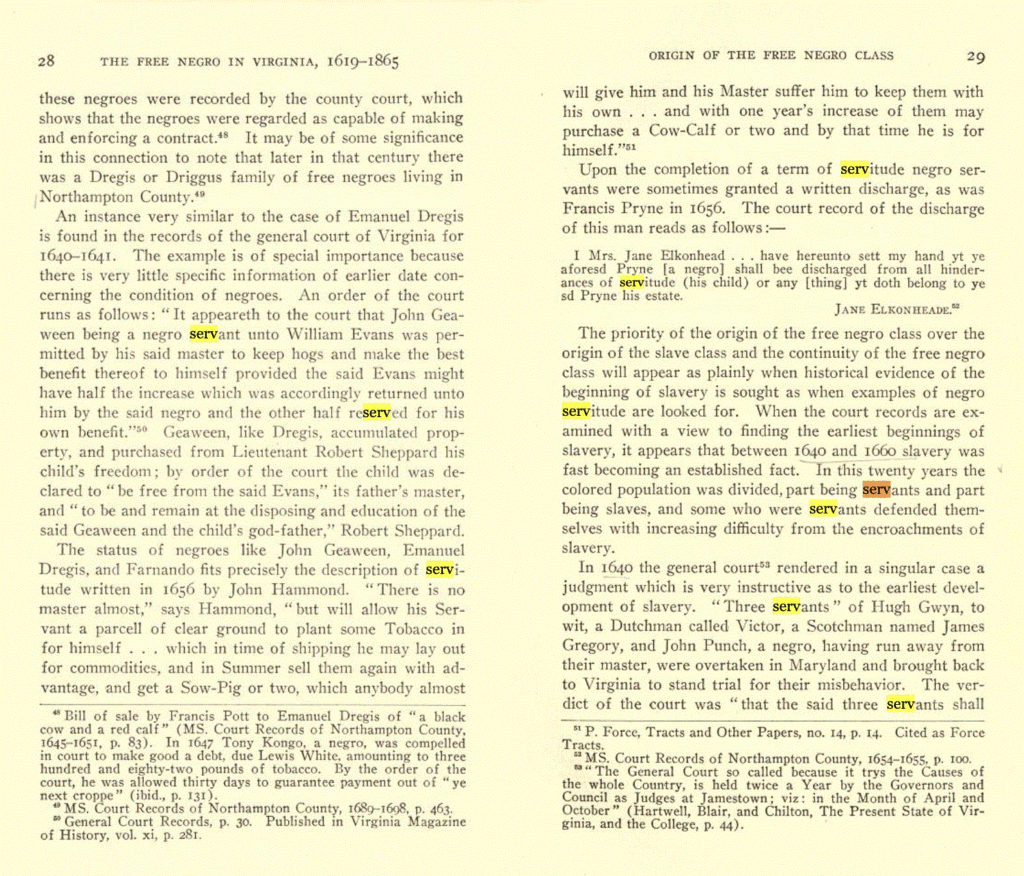The history of slavery in America is an ugly and stained beast. When we think of slavery, the first thing that comes to mind is the heinous African slave trade. There is more to the story–slavery is more diverse than most realize. Not all of the slaves were of African descent. Between the founding of Jamestown and the Declaration of Independence, the majority of slaves in North America were white (indentured servants). If you have read Henry Fielding’s novel, Joeseph Andrews, you will recall a scene where Joseph is robbed along the roadside, and the robbers take all of his clothes, leaving him to freeze in the English winter. A coach stops and picks him up, but the Nobles make him sit on top with prisoners that are on their way to colonial America where they will serve out sentences as indentured servants (each of the prisoners gave Joeseph an article of clothing to keep him from freezing to death).
In Northampton, Anthony Johnson became the first legal slave owner in America. He was an Angolan Moor who achieved freedom in the early 17th-century colony of Virginia. In 1651, Anthony Johnson owned 250 acres and the services of four white and one black indentured servant. The black servant, John Casor offered Johnson work, and he signed a term of indenture to the planter and left when done. However, in 1654 Johnson sued Casor and his then-employer Robert Parker in the Northampton Court hoping to once again ‘own’ the work of Casor. The court initially found in favor of Parker, but Johnson appealed.

In 1655, the court reversed its ruling. Finding that Anthony Johnson still “owned” John Casor. The court ordered that he be returned and that the court fees were to be paid by Robert Parker. This made Anthony Johnson the first legal American slave owner(ironically, of a fellow Negro).


This is the first time a judicial determination in the 13 Colonies held that a person who had committed no crime could be held in servitude for life. “John Casor worked tirelessly without pay nor any rights in Johnson’s plantation until his death.”
Free Negros could even “own” the services of white indentured servants in Virginia as well. Free Negros owned slaves in Boston by 1724 and in Connecticut by 1783; by 1790, 48 black people in Maryland owned 143 slaves. The 1860 Census verifies this.


A black Maryland farmer named Nat Butler “regularly purchased and sold Negroes for the Southern trade on the eve of the Civil War from a group of free Negros in New Orleans–they offered their services to the Confederacy to help keep their slaves.


The Father of Black History Month Republican Carter G. Woodson studied how many Negros owned slaves. At the time approximately 13.7% (319,599) of the black population was free. Of these, 3,776 free Negroes owned 12,907 slaves–the total of slaves owned in the United States was 2,009,043.

August Dubuclet of Iberville Parish Dubuclet was considered the wealthiest of Negro slaveholders. His real property was valued at $ 200,000. His plantation totaled more than 1,200 acres. He had 94 slaves. Antoine Decuir owned more than 1,000 acres and had 112 slaves.
Odd fact: White slaves tended to be more abused than Negro slaves due to the fact that White slaves were cheap. Negro slaves cost much more. Frederic Law Olmsted, noted after watching Negro slaves tossing bales to an Irish slave, “If the White were knocked overboard or broke his backs, the owner had not lost much.”


So it goes.
Leave a Reply